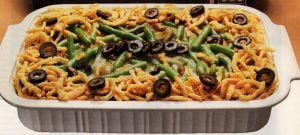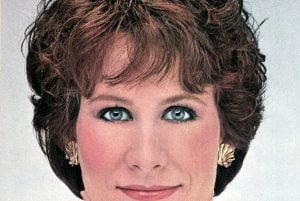The jelly shoes 80s craze was fashion that made feet weep (literally!)

Constructed from various types of plastic and arriving in an array of vibrant and often translucent colors, these shoes were quite the spectacle. Despite their kitschy charm and undeniable popularity, comfort was, regrettably, not their strong suit.
Practicality was, it seems, tossed to the summer breeze when it came to the creation of these jelly marvels. Comfort might have been on vacation, but 80s style was definitely working overtime. The shoes’ often offered a semi-translucent allure, reminiscent of a pack of Lifesavers, drew the eye, whilst their functionality had a tendency to… slip away. Literally.

In retrospect, they were less “walk in the park” and more “skate on a buttered floor.” Yet, despite acting as personal foot saunas and providing an unexpected sliding challenge, they were a must-have. After all, nothing said “I’m cool and don’t mind occasional blisters” like a pair of neon jellies, and their popularity soared — underlining the audacious fashion spirit of the time.
So let’s revisit those summer seasons when jelly shoes, with their dubious comfort and audacious colors, became an unforgettable part of our summer memories. As the saying goes, fashion is pain — and by that definition, jelly shoes were definitely fashionable.

80s jelly shoes: The footwear of summer (1984)
Article from Burlington Free Press (Vermont) July 19, 1984
This summer, when you’re in over the right shoes to wear, jellies will do. If you watch the sales, you can pick them up for as little as $2.98 a pair. For these jelly shoes, it matters not whether you buy them in the best of shoe stores, or the corner dime store.
While they’re not exactly the latest in fashion footwear, tasty versions of jellies — more properly, molded plastic shoes — are selling fast in the trendy hooferies throughout the country.

The jelly appellation comes from the vibrant, translucent colors and the material from which they are made. The styles in which they appear this summer are sweet as well, but only women are slipping them on.
Plastic shoes haven’t always been so well-fixed in the public’s mind. To get them there, it took a combination of ingredients, including marketing, production, and — of course — fashion.

Summer shoes: Plastic jellies vs sandals
Jelly shoes are fast replacing sandals as the footwear for the sporty look, and can be seen treading down Burlington streets finishing off shorts and jumper outfits, crop pants (those trousers that fall short of the ankle by about 12 inches) and miniskirts. Most have flat heels, but a heel raised about 1/2-inch accompanies some knee-length skirts.

They are most popular with children, teenagers and young women. “I love ’em,” said Marianne Jourdon, 15, of Burlington, who wore a black, leather lookalike version of black pumps with a shorts outfit.
“I take ’em off a lot. They’re hot.” The plastic does not breathe, she said.
ALSO SEE: Vintage Famolare shoes: The wavy-sole platform wedges that were hot in the ’70s

Plastic jelly shoes & sandals from the ’70s, ’80s & ’90s
“Plastic hasn’t always been the substance of choice when it comes to shoes,” said Nadine Foldes, vice president of public relations for Fun Footwear Co., one manufacturer of jellies.
In an interview, she said her firm has manufactured plastic shoes for about 25 years for a health-oriented market, for customers who preferred not to wear leather shoes. But most other people “perceived plastic shoes as being cheap, hot and uncomfortable. We knew that wasn’t so, and we wanted to change the image.”
“About six years, we wanted to introduce a fashion shoe into our product line,” she said, and what resulted was a sandal that was a best-seller in fashion-forward 1977.
DON’T MISS: Vintage shoe stores: See what shoe shopping really used to be like

Clear or colored, the shoes were worn at beaches and on streets around the world. What’s more, they were inexpensive and comfortable, albeit hot, rarely retailing for more than $10.
The lesson there was that if people saw plastic shoes as fashionable tried them on and discovered their merits, they bought.
The price tag is enough to coax young women to buy. The Jourdon household in Burlington now has eight pairs of the jellies in their three young girls’ closets. “We can trade them off,” Marianne Jourdon said.
“I like them because they’re cheap, and I have a lot of the colors to go with different outfits,” said Zita Ryan, 18, of Plattsburgh, New York, as she shopped on Church Street in pink crop pants, a black Hawaiian shirt — and pink ribcage jellies.


Ryan agrees that, sometimes, her shoes become uncomfortable, “When it’s warm, my feet sweat on the bottom,” she said. She caught a jelly sale, and bought three pairs for $2.98: black, blue, and pink. But the cheapness of the shoe is exactly the definition of them given by her parents.
“My father gets mad when I put them on,” Ryan said. “He can’t believe when I wear them.” Her mother, Zita, agrees with her father. “He says they’re tacky, and he’s right,” said Zita Ryan, also of Plattsburgh, looking at her daughter’s feet and shaking her head.
Jellies factory: How ’80s jelly shoes were made
Fun Footwear’s first style was successful enough that the Foldes company wanted to tread into trendier ventures. Last summer, Fun Footwear introduced ribcage shoes, designed by the president of the Pennsylvania-based company — Foldes’ husband, Steven.
The style was based on a successful braided-leather model, and their version “was the single best-selling shoe in the country,” she said.
Fun Footwear created designs for summer and winter styles. Production was stepped up; the company has been making 30,000 pairs of shoes a day for women and children.


The path of that production is fairly straightforward. A polyvinyl chloride pellet that “looks like rabbit food,” Foldes said, is heated until it melts. When liquid, it’s poured into a mold, where it cools in 15 seconds. The mold is removed, the shoe is trimmed and another pair is in the box.
The resulting shoe is supple, lightweight, and “virtually indestructible,” Foldes said. Waterproof and heatproof, the shoes are styled in sandals that are airy and open for summer as well as winter boots that are cozy and snug.
The company has 15 new patterns annually and produces more than 20 new colors — from neons to neutrals. Bright colors are the shoes’ attraction, their wearers say, but the ribcage pattern is not for all jelly owners.
“I don’t like the tan you get through them, with the little holes,” Jourdon said. “I don’t want polka-dotted feet.”

Guess brand 90s jelly shoes from 1995: Pink & blue with heels

ALSO SEE: Vintage Dr Scholl’s Exercise Sandals & Toe Hugger shoes for women





















3 Responses
Who runs this site? I just found it. I love it! You should advertise more.
My daughter was in preschool in the early ’90s and was totally obsessed with “jellies”. In fact, we couldn’t get her to wear anything else. She was very much a “girly girl” who loved wearing dresses, and she thought that jellies were really dressy. She grew out of the jelly phase once she realized they were giving her blisters and kept falling off her feet. Plus, once she got to elementary school, they were banned for safety reasons, as they often made kids trip (the jelly craze was over by then anyway).
Worst shoes ever, other than the clunky hard wood Dr. Scholl’s exercise sandals. Hated those too.